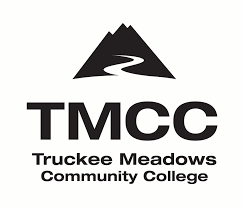TMCC Graphic Arts & Media Technologies
Graphic Arts and Media Technologies help the world communicate across a wide range of delivery systems and media formats. The industry offers a variety of job opportunities that can lead to employment as graphic designers, art directors, prepress and production technicians, web designers, videographers, 3D modelers and animators, the list goes on and on.
TMCC's Graphic Arts and Media Technology (GAMT) program offers classes (GRC and VIS) that lead to an Associate of Applied Science (professional) degree, and Associate of Arts (transfer) degree, or a Certificate of Achievement. The program also has an Advanced Certificate (the equivalent to junior-level/300 level courses) that leads to a fourth-year GAMT Bachelor’s degree in Visual Media conferred by Nevada State College, all taught at TMCC!
Instruction includes the use of industry standard graphics software, and GRC/VIS computer labs are equipped with the latest Apple iMac computers with support scanners, black and white and color printers, large format printers, a sound booth for creating and capturing audio, a stop-motion animation lab, and a complete print shop and screen printing facility.
The bottom line is, if you want to learn how to create, produce and reproduce visual graphics that communicate to an audience, then Graphic Arts and Media Technology is for you. The GAMT program teaches the theories and applications necessary to get a job in this exciting and expanding field.
Program Information
Course Offerings
Degree and Certificate
Competency-based Program
Performance-based Instruction
Program Assessment Outcomes
Course Offerings
The GAMT program offers classes that range from introductory to advanced, and are offered during day and evening timeframes. There are two levels of foundation (introductory) classes that all Graphic Arts and Media Technology majors must take before moving on to higher-level courses. GRC 100, GRC 116 and ART 101 are first level, and students with equivalent academic or work experience may skip these classes with department approval.
Second level foundation classes are GRC 117 and GRC 200, which focus on merging creative skills with the various software required in print, digital and motion media. All five foundation courses are offered during Fall and Spring Semesters, but enrolling early is highly recommended, GRC/VIS class fill quickly. Not all intermediate/advanced classes are offered every semester, please check the schedule of classes or contact the department for sequencing of courses.
While manual skills are important in Graphic Arts and Media Technology, most classes focus on electronic techniques using Apple computers and Adobe InDesign, Illustrator, Photoshop, Acrobat, Dreamweaver, Animate, Premiere, Audition, After Effects and Maya 3D software.
Degrees and Certificates
In a recent survey of industry representatives, 60% said that an associate degree related to Graphic Arts and Media Technology was the level of training they were looking for when hiring for entry-level positions. With this in mind, the program offers a full range of Certificates and Associates degrees, in addition to our new Advanced Certificate.
Tracks
All degrees and the Advanced Certificate offer tracks in Graphic Design, Web/UI Development, and Motion Design. Check out the links below to view degree and certificate requirements as well as course sequencing.
Catalog: Graphic Communications AAS
Catalog: Graphic Arts and Media Technology AA
Catalog: Graphic Arts and Media Technology Advanced Certificate
Catalog: Graphic Communications Certificate of Achievement
Bachelor of Arts Degree
Graphic Arts and Media Technology
A 4-year Bachelor of Arts degree in Visual Media with an emphasis in Graphic Arts and Media Technology can be obtained at TMCC, through a partnership with Nevada State College (NSC). This partnership allows students to complete the first three years in the GAMT program at TMCC and finish their fourth year with NSC while remaining on the TMCC campus.
The first two years are the AA in Graphic Arts and Media Technology, the third year is the Advanced Certificate in Graphic Arts and Media Technology, and the final year is a BA in Visual Media with NSC. Students complete their final year on the TMCC campus, making the program a seamless path to a bachelor’s degree.
Competency-based Program
You, as a learner, are the most important part of instruction. In performance-based instruction, we carefully identify what you need to be able to do as a result of an instructional experience. Next, we determine how you can show that you have learned these skills. Finally, we plan learning activities that will help you develop the skills.
Competency-based Program
You, as a learner, are the most important part of instruction. In performance-based instruction, we carefully identify what you need to be able to do as a result of an instructional experience. Next, we determine how you can show that you have learned these skills. Finally, we plan learning activities that will help you develop the skills.
Performance-based Instruction Offers Many Advantages
What you will learn is based on the skills you will need rather than on outlines of information.
1. You know the standards for evaluation before the performance test. You earn a grade according to how well you perform the skills rather than according to how well others in the class perform. You are not graded on a curve.
2. You are actively involved in the learning. We design learning activities and assignments that teach you to solve problems and to learn on your own.
3. When you complete a learning experience, you have documentation showing the skills you have learned. You can use this information when you seek employment, admission to further education, advanced standing or transfer of credit.
Program Assessment Outcomes
Students completing the certificate will:
Identify and apply historical and current design theories and concepts in the production of visually engaging media that meets the requirements of the graphic communications industry.
Acquire a broad skill set in current graphics related technologies, including computer software applications, processes and other production techniques used in the graphic communications industry.
